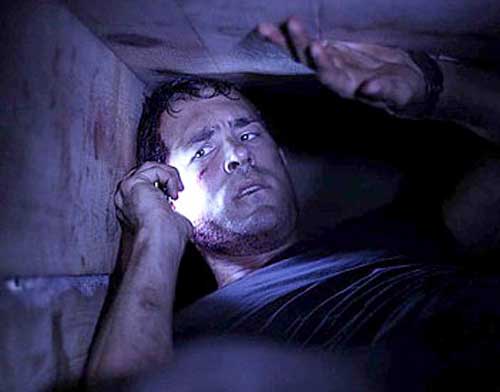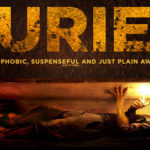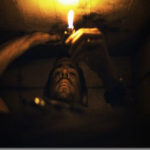Remember The Vanishing? Not the appalling 1993 Hollywood remake George Sluizer was bribed to direct against his better judgement with a schmaltzy ending to please the studio, but his original 1988 Dutch movie Spoorlos.
The first time I saw it this film was on late night C4 and by accident. This astonishing film arrived on my schedule like a thousand forgettable pictures before, but unlike all but a handful captured my attention from beginning to end. It crackled with tension and the ending was utterly terrifying. This was a small low-budget film but as compelling a thriller as any I’d seen in years.
That this scenario should be given an unbelievable happy ending by Hollywood mortified me. It was as if someone had sold my memories down the Swannee, almost like killing off Bambi in reverse. The remake cheated the audience and snapped audience credibility way beyond the point of incredulity, for which abomination I blame the studio rather than the unfortunate Sluizer.
So what was remarkable about the ending? Normally I wouldn’t give spoilers, but this is a very particular situation and now a well-known film. The leading protagonist, who has spent years trying to track down his girlfriend who went missing from a motorway service station, eventually finds the kidnapper and talks about how he went about the process, but will not give away what happened to her unless he is anaesthetised.
Otherwise, says the villain, the hero will die without knowing the truth. He takes this option and…. wakes up some hours later to find himself buried in a coffin with only a cigarette lighter and no means of communication, certain that he will suffocate as soon as the remaining oxygen has depleted.
The prospect of premature burial situation sparks the worst nightmares of every claustrophic, but also terrifies pretty much everyone. The Victorians included ways for people buried alive to communicate with the outside world, since that was the worst of all fears (in fact, a “safety coffin” was devised in the 12th Century); not much changes, and this makes for a gripping suspense movie.
Buried (as opposed to Buried Alive or other movies with a similar premise) is the continuation of The Vanishing in a parallel scenario where the people who put the protagonist in his box did so with a very specific goal, that of extracting a ransom.
This they do by leaving tools to allow him to communicate to a limited degree, of which more in a moment, including a mobile phone with half a battery left. Paul Conroy (Ryan Reynolds), a truck driver for an American company transporting a load into Iraq, has to persuade people to help him. Meanwhile, his kidnappers are demanding he made and post a video with words scribbled on a note found in the coffin, and extract from family or friends a ransom demand (initially $5m by deadline, reducing to $1m.)
Meantime, air is running out and when at length Conroy gets through to a hostage specialist at the State Department, who may or may not be the real deal but is the best hope the man has to be rescued before the air runs out and the sand swallows his shallow grave. Patiently they work through the clues to allow the ground troops to identify the spot where Conroy is buried, but will it be too late?
The other film this reminds me of was Locke, where Tom Hardy‘s protagonist is driving from Manchester to London in his BMW and talking via mobile phone to a succession of people. In the course of one journey his life changes top to bottom, though the only risk of death he has would be crashing his car on the M6.
For Conroy, curbing the natural urge to panic and focus his mind to resolve the issues is the only thing that matters – a survival instinct takes over. Apart from a brief video clip of Conroy’s colleague Pamela Lutti (Ivana Miño), all other actors appear only as voices (as with Locke.) Otherwise we have just a rudimentary wooden coffin with sand leaking through housing Conroy and the few tools he has at his disposal, plus a brief cameo by a sand snake.
What we learn is that Americans are not that supportive of their citizens, that at least one (fictional) American company is concerned only about absolving itself of responsibility for Conroy’s demise (the bastards!), that in a crisis you never truly learn who to trust, that advice is conflicting and you have to make up your own mind when you’re in that predicament, that your loved ones are never available or compos mentis until the very last moment, and that life is way too precious to let go without at least having tried every avenue of recovery first – but when that moment comes, prepare for your end with dignity and decorum.
There is a twist at the end, which I will not reveal, but that the prospects for Conroy do not look great. What I love about Buried is that, just as with the original Vanishing it does not pull its punches, and is not afraid to have a shocking and downbeat ending, and is MUCH superior for that. Who knows, there may well be American citizens buried, dead and alive, throughout Iraq that the State Department is tracking on a daily basis. This has the ring of truth.
But then this should be no surprise, since it is a Spanish movie filmed in English language with American actors under the guidance of a Spanish director, Rodrigo Cortés. The really sad thing is that no American studio would dream of shocking an audience like that, but then there is a vast gulf between American and European culture, no matter what you may have been told. I’m sure Tarantino has something similar planned any day now.
In the final analysis, Buried does not have the shock value elicited by the first viewing of The Vanishing, but it is still recommended – providing you are not claustrophobic. If you are, I’d suggest you go for a long walk in the open air and try not to think about the inevitability of death and being confined to a small and airless coffin. Just make sure you are truly dead when you get there!

















